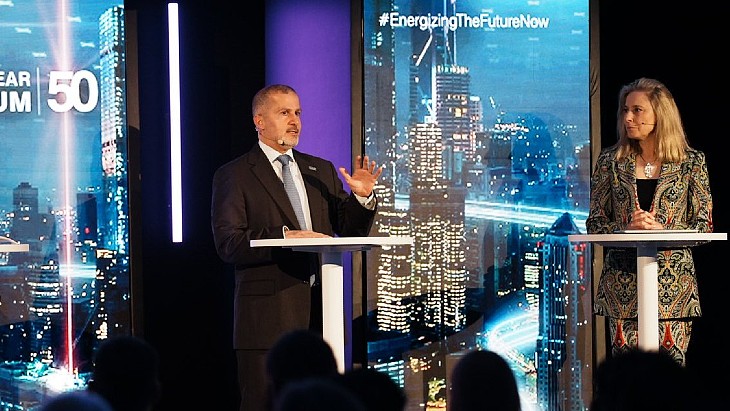US generator AmerenUE has announced it is suspending its efforts to build a new nuclear power plant at Callaway in Missouri, saying that state policies are making it too difficult to finance the project. Meanwhile, the chairman of a US energy regulator has publicly questioned whether the country needs any new nuclear plants.
Ameren has asked legislative sponsors to withdraw a new act currently before the state government, the Missouri Clean Air and
 |
| Callaway (Image: NRC) |
"As we were moving forward to preserve the option for nuclear energy for our state, we stressed that we needed financial and regulatory certainty before we could begin construction. However, the current version of the bill being debated in the Senate strips the legislation of the very provisions we needed most to move forward. As a result, AmerenUE is suspending its efforts to build a nuclear power plant in Missouri," said AmerenUE president and CEO Thomas Voss.
A key element of the originally proposed legislation, construction work in progress (CWIP), would allow utilities to recover financing costs from customers while in the process of building a new plant. CWIP funding plans are used in various US states - the Georgia Public Service Commission recently adopted a motion allowing Georgia Power to use such a plan to recover its financing costs while building two new reactors planned at its Vogtle site - but Missouri law prevents investor-owned utilities in the state from recovering any plant development costs until an energy plant is operating.
The lack of CWIP makes financing a new plant in the current economic environment impossible, according to AmerenUE. "A large plant would be difficult to finance under the best of conditions, but in today's credit constrained markets, without supportive state energy policies, we believe getting financial backing for these projects is impossible," Voss said. "Pursuing the legislation in its current form will not give us the financial and regulatory certainty we need to complete this project."
The utility submitted an application to the US Nuclear Regulatory Commission for a combined construction and operating licence (COL) for a new Areva-designed US EPR alongside its existing single unit at Callaway in July 2008 and as long ago as 2007 had contracted with Areva Inc for heavy forgings. With the project suspended rather than cancelled, the company has not yet made any announcements about its future intentions for the COL application.
New nuclear not needed?
The AmerenUE announcement came shortly after John Wellinghoff, chairman of the US Federal Energy Regulatory Commission (FERC), told a press conference that new coal and nuclear plants could be unnecessary. According to reports in publications including the New York Times, Wellinghoff described new nuclear and coal plants as too expensive and said that renewables like wind, solar and biomass would be able to provide enough energy to meet baseload capacity and future demands.
"We may not need any, ever," Wellinghoff said of new coal and nuclear plants at the press conference organised by the US Energy Association.
John Ritch, director general of the World Nuclear Association (WNA), said Wellinghoff was "potentially right on coal, and ridiculously wrong on nuclear". He went on: "In almost every major nation in the world, and most probably the United States, nuclear power will lead the clean-energy revolution."
The USA obtains almost 20% of its electricity from its operating fleet of over 100 nuclear reactors. 17 licence applications have been lodged with the NRC to build 26 new nuclear reactors since mid-2007, and both government and industry envisage significant new nuclear capacity by 2020.




_18570.jpg)
_16159.jpg)
_18938.jpg)
_33584.jpg)





